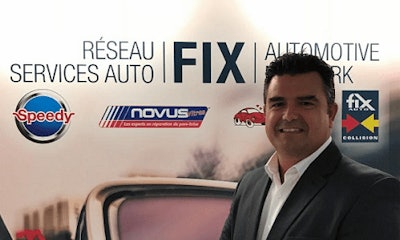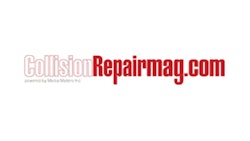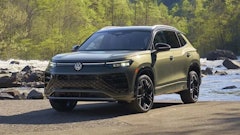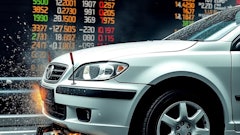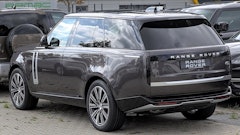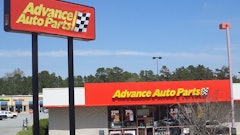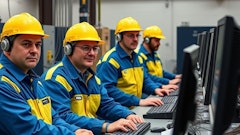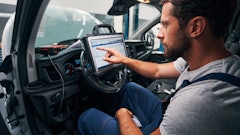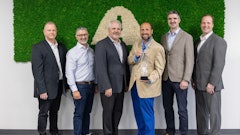Toronto, Ontario — September 18, 2018 — This week, Collision Repair caught up with the newly appointed vice president of operations for Fix Automotive Network Sylvain Séguin. He now oversees the operations teams for all brands for the network in Canada which includes Fix Auto, NOVUS Glass and Speedy Auto Service.
Collision Repair: Mr. Séguin, could you tell us a bit about how you came to become a senior executive in the Fix Automotive Network?
Sylvain Séguin: When I joined AkzoNobel back in 2004, I quickly realized that there was a world of opportunities in this trade. I soon became passionate about the industry, and that passion lead to getting involved in all parts of the business.
With Akzo, it was all about supporting the bodyshop’s profitability; therefore, we had to undergo extensive financial training. Being in a sales leadership role also meant being a P&L and a business manager for Akzo, with the support of the finance team, of course.
CR: What is the most important lesson you have learned in your career so far?
SS: What got you here won’t get you there. In this rapidly changing industry, you need to stay connected and always update yourself in order to follow the latest trend.
CR: Do you have any advice for shop-floor members of the auto repair industry about how they might one day find themselves in a corner office?
SS: Immerse yourself in all aspects of the industry, be open minded, stay engaged and don’t be afraid to raise your hand or your voice to be heard. Get involved wherever and whenever you can.
CR: What do you see as the biggest challenges facing the collision repair industry in the next decade?
SS: We all know that skilled employees are, and will continue to be, the biggest challenge of the collision repair industry and I believe that the only way that we can change that is by educating the population about the trade.
Working in a collision repair facility is not what it used to be. For the most part, collision repair shops are upgrading to the latest technology to provide the best quality repairs and meet the OEM requirements. Education for technicians is evolving and ongoing training is required in order to operate. People thinking about entering the trades need to understand that you can and will make a good living in the automotive aftermarket services industry—whether it’s on the mechanical, collision or glass side. Plus, countless job opportunities will come with experience and knowledge they acquire along the way.
A career path in this industry can be a technician, manufacturer representative, appraiser, working for an insurer, a network, a supplier, etc. I do not know of any other industry that gives you access to that many opportunities.
CR: What is it about the Fix Automotive Network’s business model that has allowed it to enter markets around the world?
SS: In my opinion, the entrepreneurial spirit, innovation and the forward thinking vision of the network and its franchise strategic partners is what drives the Fix Automotive Network into various markets around the world.
CR: What was your first car? What do you drive now? What is your dream car?
SS: My first car was a 1981 Silver Mercury Lynx, that I soon turned into a red one! Today I drive a company car. My dream car is a red 1967 convertible Ford Mustang.
Collision Repair magazine: Mr. Séguin, could you tell us a bit about how you went from working as a bodyshop painter, to overseeing budgeting at AkzoNobel, and then to serving as a senior executive in the Fix Automotive Network?
Sylvain Séguin: When I joined AkzoNobel back in 2004, I quickly realized that there was a world of opportunities in this trade. I soon became passionate about the industry, and that passion lead to getting involved in all parts of the business.
With Akzo, it was all about supporting the bodyshop’s profitability; therefore, we had to undergo extensive financial training. Being in a sales leadership role also meant being a P&L and a business manager for Akzo, with the support of the finance team, of course.
CRM: Do you have any advice for shop-floor members of the auto repair industry about how they might one day find themselves in a corner office?
SS:Immerse yourself in all aspects of the industry, be open minded, stay engaged and don’t be afraid to raise your hand or your voice to be heard; get involved wherever and whenever you can.
CRM: What is the most important lesson you have learned in your career so far?
SS: What got you here won’t get you there. In this rapidly changing industry, you need to stay connected and always update yourself in order to follow the latest trend.
CRM: What do you see as the biggest challenges facing the collision repair industry in the next decade?
SS: We all know that skilled employees are, and will continue to be, the biggest challenge of the collision repair industry and I believe that the only way that we can change that is by educating the population about the trade.
Working in a collision repair facility is not what it used to be. For the most part, collision repair shops are upgrading to the latest technology to provide the best quality repairs and meet the OEM requirements. Education for technicians is evolving and ongoing training is required in order to operate. People thinking about entering the trades need to understand that you can and will make a good living in the automotive aftermarket services industry—whether it’s on the mechanical, collision or glass side. Plus, countless job opportunities will come with experience and knowledge they acquire along the way.
A career path in this industry can be a technician, manufacturer representative, appraiser, working for an insurer, a network, a supplier, etc. I do not know of any other industry that gives you access to that many opportunities.
CRM: What is it about the Fix Automotive Network’s business model that has allowed it to enter markets around the world?
SS: In my opinion, the entrepreneurial spirit, innovation and the forward thinking vision of the network and its franchise strategic partners is what drives the Fix Automotive Network into various markets around the world.
CRM: What was your first car? What do you drive now? What is your dream car?
SS: My first car was a 1981 Silver Mercury Lynx, that I soon turned into a red one! Today I drive a company car. My dream car is a red 1967 convertible Ford Mustang.
